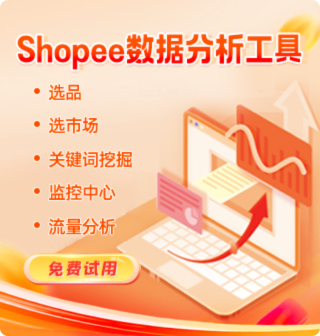-
用户152****5481
Shopee Data Analysis Software: Unlocking Insights for E-Commerce Success
In today’s highly competitive e-commerce landscape, data-driven decision-making has become indispensable for sellers aiming to optimize their operations and boost sales. Shopee, as one of the leading e-commerce platforms in Southeast Asia, recognizes this need and provides various data analysis tools and software to empower sellers with actionable insights.
This article dives deeply into Shopee’s data analysis software ecosystem, exploring its features, benefits, and practical applications, while also sharing strategic tips to leverage data for sustained growth.
1. Overview of Shopee’s Data Analysis Software
Shopee provides sellers with integrated data analysis tools primarily accessible via the Shopee Seller Centre and accompanying mobile apps. These tools aggregate and visualize key performance metrics in real time, helping merchants monitor their store health and make well-informed decisions.
In addition to Shopee’s native analytics, third-party software solutions and APIs exist to further enhance data analysis capabilities, enabling advanced users to customize data extraction and reporting.
2. Core Features of Shopee’s Native Data Analysis Tools
a) Sales and Revenue Reports
- Displays daily, weekly, and monthly sales volumes, gross merchandise value (GMV), and revenue figures.
- Allows sellers to identify sales trends and seasonality.
b) Traffic and Conversion Metrics
- Shows the number of visitors, page views, and unique users.
- Conversion rate analysis helps evaluate how effectively product pages turn visitors into buyers.
c) Product Performance Insights
- Breaks down sales data by individual SKUs.
- Highlights best-sellers and underperforming items, facilitating inventory optimization.
d) Customer Behavior and Demographics
- Provides data on customer locations, gender distribution, and repeat purchase rates.
- Useful for tailoring marketing campaigns and product assortment.
e) Order and Fulfillment Tracking
- Tracks order processing times, shipping status, and cancellation rates.
- Helps sellers identify bottlenecks in the fulfillment process.
f) Marketing Campaign Effectiveness
- Monitors results of Shopee Ads, voucher usage, and participation in flash sales.
- Enables sellers to calculate return on investment (ROI) for advertising spend.
3. Extended Capabilities with Third-Party Data Analysis Software
Beyond Shopee’s built-in analytics, several third-party platforms specialize in e-commerce data analysis, offering enhanced features such as:
Advanced Competitor Analysis: Monitoring pricing, promotions, and inventory levels of competitors.
Market Trend Forecasting: Using machine learning algorithms to predict demand patterns.
Automated Reporting: Custom dashboards and scheduled reports.
Multi-Channel Integration: Combining Shopee data with other marketplaces, social media, and ERP systems for holistic insights.
Examples include platforms like Shoplytics, SellerApp, and TradeGecko, which can connect to Shopee’s API to extract and process data seamlessly.
4. Practical Applications of Shopee Data Analysis Software
a) Pricing Optimization
Using sales velocity and competitor pricing data, sellers can dynamically adjust prices to remain competitive while protecting margins.
b) Inventory Management
Analyzing product performance and sales forecasts helps maintain appropriate stock levels, reducing overstock and stockouts.
c) Marketing Strategy Refinement
By evaluating which campaigns generate the highest conversions and customer engagement, sellers can allocate budgets more effectively.
d) Customer Segmentation
Understanding demographics and buying behavior enables personalized promotions and loyalty programs.
e) Operational Efficiency
Tracking fulfillment KPIs allows sellers to improve shipping times and reduce cancellations, leading to higher customer satisfaction.
5. Tips for Maximizing the Value of Shopee Data Analysis Tools
Regularly Review Metrics: Daily or weekly monitoring ensures sellers can react quickly to changing market conditions.
Set Clear KPIs: Define key performance indicators aligned with business goals (e.g., target conversion rate or average order value).
Leverage Data to Test Hypotheses: Use A/B testing on product titles, images, or prices and analyze impacts.
Integrate Multiple Data Sources: Combine Shopee data with customer feedback, social media insights, and external market data for comprehensive understanding.
Automate Reporting: Use software features to generate automatic reports, freeing up time for strategic decision-making.
6. Challenges and Considerations
Data Accuracy: Sellers must ensure proper data input and synchronization to avoid misleading conclusions.
Privacy and Compliance: Handling customer data requires adherence to local data protection laws.
Skill Gap: Extracting value from data analysis tools may require training or hiring expertise in data analytics.
Cost vs. Benefit: Advanced third-party tools often come with subscription fees, which should be justified by measurable ROI.
Conclusion
Shopee’s data analysis software and tools are essential resources for sellers aiming to compete effectively in the bustling e-commerce marketplace. By leveraging detailed performance metrics, customer insights, and market intelligence, sellers can fine-tune pricing, optimize inventory, and execute targeted marketing strategies.
Combined with third-party analytics platforms, Shopee’s data ecosystem offers scalable capabilities for both new and experienced sellers. Mastery of these tools not only drives operational efficiency but also unlocks growth opportunities in an increasingly data-driven retail environment. Sellers who commit to a data-centric approach will be best positioned to succeed on Shopee’s dynamic platform.

